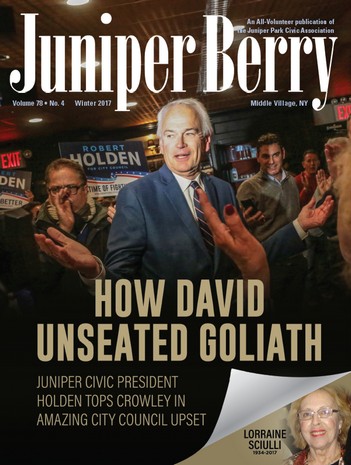DSNY is responsible for snow removal from the City's 19,000 lane miles of roadways. When weather predictions show a winter storm, DSNY personnel begin equipment readiness, including loading salt spreaders, attaching plows, preparing tire chains and notifying personnel.
When do salt spreaders start working?
Salt spreaders are the first line of defense. Many salt spreaders are pre-positioned before the storm starts. They spread a mix of rock salt and calcium chloride when a trace amount of snow, or other frozen precipitation, has fallen.
Does DSNY pre-treat streets with salt?
Generally, DSNY does not find pre-treatment effective as vehicles riding over dry salt remove it from the center of the street where it is needed.
When are snow plows used? How do they work?
Plows may be pre-positioned before the start of a storm and begin operating once nearly two inches of snow has accumulated. Plows are not designed to scrape the street to blacktop. The plow is set slightly off the ground so the truck will not “trip” on uneven streets or manhole covers. Remember, a plowed street will not show clear to the blacktop. This is to be expected. A combined approach of salting roadways and using plows is most effective in heavy snowfall.
Who is responsible for cleaning snow and ice from the sidewalk?
Owners, lessees, tenants, or other occupants are responsible for clearing snow and ice from sidewalks. Snow and ice should NOT be pushed in to a street or crosswalk. Try to clear a 3 to 4 foot path. Corner properties should clear a path to the crosswalk, including pedestrian ramps. Those who do not comply can face fines. If possible, consider assisting elderly or disabled neighbors.
How long do I have to clean the sidewalk?
If the snow stops falling between: 7:00 a.m. and 4:59 p.m. you must clear within four hours 5:00 p.m. and 8:59 p.m. you must clear within fourteen hours Example: If the snow stops falling at 7:00 p.m., the owner, lessee, tenant, occupant or other person in charge of any lot or building has until 9:00 a.m. the following morning to clear. 9:00 p.m. and 6:59 a.m. you must clear by 11:00 a.m.
What is the best way to clean snow from the sidewalk?
Remove snow along the sidewalk adjacent to your property. Do not push snow from the sidewalk into the street. Clear the snow from around the fire hydrant if there is one in front of your property. Do not cover crosswalks with snow. You should move the snow to your front yard, behind the stoop line, or to the grassy curb strip if one exists.
Where possible, try to clear a path at least four feet wide along the sidewalk. Corner property owners should clear a path to the crosswalk, including any pedestrian ramps, and where the snow has melted people in wheelchairs and creates a puddle, disperse the water away from the crosswalk. This will help people with children in strollers, students going to school, and individuals with mobility-assistance devices
Who clears fire hydrants and catch basins?
According to the NYC Administrative Code, the person having charge of the adjoining property is responsible for keeping the fire hydrant clear of snow and ice and any other debris on materials to ensure it is accessible during a fire emergency. While there is no specific requirement to clear snow around catch basins, they provide drainage when snow and ice begin to melt.
Clearing the catch basins and placing a channel towards the catch basin will help prevent flooding when snow and ice begin to melt. Clearing fire hydrants and catch basins benefits everyone on the block and is something that block residents may wish to work together on to help address.
Why do snow plows leave a ridge at the end of my driveway? Who is responsible for clearing the ridge?
Snow ridges are an unavoidable after-effect of plowing streets, particularly in larger or heavier snow storms. DSNY must plow to create a passable driving lane. While this clears a path for traffic, in times of heavy snow, it may leave a snow ridge. We appreciate this concern. However, residents are responsible for clearing any ridge in front of their driveway. We suggest driveways be cleared after street snow clearing operations are conducted and completed. It is important that snow may not be placed in the street because this could create hazardous conditions and the need to re-plow the street, which may result in the creation of another snow ridge in front of one's driveway. Placing snow in the street, if observed by Sanitation personnel, could result in the issuance of a Notice of Violation, with a fine of $100.
How can locations that do not clear their sidewalks be reported?
Residents can make a Failure to Clean Ice/Snow from sidewalk service request to the NYC 31 l Customer Service Center. Call 311 or go to www.nyc.gov/311. Make sure the problem is on the public sidewalk (not on stoops or internal pathways). Provide a specific address. Make sure the time period (listed above under “How long do I have to clear the sidewalk?” has passed since the snow stopped.
What happens if I don't clear my sidewalk?
Homeowners, property managers, businesses, or others, who do not comply, can face fines of S100-$150 for the 1st offense, S150-$350 for the 2nd Offense, $250-$350 for the 3rd Offense and subsequent.




